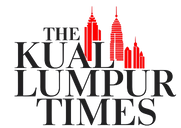News Carbon & Climate The future of conservation in a warming world
Conservationists are rethinking strategies to build climate resilience in nature as rising temperatures threaten species and ecosystems worldwide.

About 90 kilometres (56 miles) southeast of Cape Town lies the tranquilly-named town of Betty’s Bay in South Africa, home to less than 2,000 people. But it’s not the people that draw Nik Sekhran’s eye.
“I enjoy watching the African oystercatchers,” says Sekhran, chief conservation officer at World Wildlife Fund (WWF).
Big black birds with stunning red beaks, African oystercatchers (Haematopus moquini) are only found in South Africa and Namibia — and they only nest on beaches near cold sea water, Sekhran says.
Rising sea levels are pushing these birds to nest further inland, where, he says, they are running into people and dogs.
“I think a lot about these birds, who have so far managed to adapt and find protected enclaves to lay their eggs. But as tides continue to erode the dunes toward our house, the birds will be hard-pressed,” Sekhran says.
In 50 years, will the African oystercatchers still nest at Betty’s Bay? Will they have anywhere to nest? The plight of these little-known birds may soon become the plight of species everywhere.
“In 50 years, it’s entirely possible that climate change will have become the largest threat to many species in the world — and thus to ecosystems in general,” says James Deutsch, the CEO of Rainforest Trust. Today, the biggest threat remains habitat loss, but climate change is climbing among the perils for nature.
What will the world look like in 2075 when temperatures could be 3-5° Celsius (4.5 to 9° Fahrenheit) higher than the pre-industrial average? And what should conservationists be doing now to better prepare nature for the changes to come?
Mongabay interviewed eight conservationists to better understand how we can aid the natural world to build greater climate resilience.
“
Nature is the best technology we have. It’s running for millions of years. Restoring nature at scale… will also help us to mitigate a lot of the [climate] impacts.
Resilience
Andrew Whitworth, executive director of Osa Conservation in Costa Rica, says we should think of nature in terms of “resilience” instead of “adaptation.”
“I think adaptation is this sort of flimsy word that makes me think that we’ll just adjust ourselves … That is not the way to think about what’s happening to nature in the face of climate change,” he says. “Resilience means that you’re going to come through something, and it’s going to be tough, and it’s going to be hard and it’s going to be losses, and you’re not going to come through it unscathed, but the goal is that you’ve come through it.”
Whitworth further describes conservation today as a three-legged stool. One leg is protected areas like national parks, the second is species-focused programs, but the third — and the least focused-on — is building climate resilience.
“And if you don’t have this third leg of climate resilience underpinning both of those strategies, then all of this work just falls down,” he says.
So, how do we do it? How do we build climate resilience into natural systems that are already under attack by deforestation, habitat destruction, over-exploitation and invasive species among other impacts?
Jean Labuschagne, director of conservation development at the NGO African Parks, spells it out with three components: “Large, connected, well-managed ecological systems.”
Bigger is, indeed, better
The NGO Rewilding Europe doesn’t designate their work as “projects,” but landscapes. And that word — landscapes — encapsulates what numerous sources pointed to as key to preparing nature for a hotter planet: Size.
“Each of these areas are at least 200,000 hectares [494,200 acres]. Some of them are even much bigger,” says Rewilding Europe’s executive director Frans Schepers. The NGO works in ten landscapes across the continent.
The point? When it comes to safeguarding nature in a hotter world, bigger is indeed much, much better.
“Large intact ecosystems are naturally more resilient,” agrees James Deutsch, CEO of Rainforest Trust. “I think focusing on the most intact remaining large ecosystems, and especially large tropical forests, becomes really important … the very size provides adaptive ability.”
For its part, in recent years, Rainforest Trust has begun to include large intact rainforests in its portfolio. While the group used to focus exclusively on small, key biodiversity hotspots, they are now putting additional energy — and funding — into the Amazon, the Congo rainforest and New Guinea, the three largest tropical forests on the planet.
“Arguably, the lowland Amazon is going to be more important 50 years from now, because that’s where there’s still going to be some species left,” says Deutsch. The sentiment may be dark, but it’s also clear-eyed about the challenges ahead.
So, why does size matter? Because when stress hits, species have room to move. Researchers say that portions of large protected areas — some we may not predict today — can become refuges in the case of heat or drought, floods or fire. So, how do we improve our protected area coverage?
Deutsch says the “number one tool in our toolbox” is the 30 by 30 initiative. More than a hundred nations have agreed to this initiative, which calls for setting aside 30 per cent of land and waters by 2030 — just five years away.
Globally, that would require an ambitious boost in conserved lands and waters. Currently, around 17 per cent of the world’s land surface and 8 per cent of the world’s oceans are designated as protected. Hitting 30 per cent — especially if done with climate change in mind — could go a long way toward safeguarding many species from what’s to come.
Biggest ‘bang for your buck’: Tropical lowlands to highlands
As an example of an optimal protected area for a hotter world, Andrew Whitworth points to Manu National Park in the Peruvian Amazon.
Manu covers a vast area of 17,162 square kilometres (6,626 square miles), an area larger than the US state of Connecticut. But just as important to Whitworth: Manu has an advantage many parks lack — it has both highlands and lowlands. Manu protects land all the way from just 150 meters (492 feet) above sea level to 4,200 m (13,779 ft.).
“It’s these elevational changes where you get this incredible biodiversity,” says Whitworth, who discovered a frog species new to science in Manu’s foothills.
A park with this much altitudinal difference will allow species to migrate upslope as Amazonian lowlands heat up and dry out, Whitworth explains. As climate change pummels our planet, species in temperate areas will move poleward — that is, northward in the northern hemisphere and southward in the southern. But in the tropics, they will move upslope — as far as possible.
“Species are already on the move, and we’re seeing these range shifts quite quickly,” Whitworth says. “So, the reality has hit us that things are on the move, and [conservationists] haven’t thought about that in any of our strategies so far for conservation.”
While protecting lands that allow for temperate species to move will be vital, Whitworth says the most “bang for your buck” will be in preserving “tropical elevation gradients.” In lay terms, Whitworth is saying we need to connect lowland rainforests to highland rainforests and cloud forests, as high as possible, to provide refuges for tropical species to escape to, just like Manu does.
“Those are the climate lifeboats,” he says. He points to a 2019 paper in Nature Climate Change that found, disturbingly, 62 per cent of tropical forests are not connected enough to be ready for climate impacts.
Looking regionally, Whitworth co-authored on a study published in PLOS ONE that mapped out existing and potential climate corridors across all of Central America, highlighting the areas most in need of protection from a “climate lifeboat” perspective.
Whitworth’s conservation group, Osa Conservation, has shifted its strategy from planting trees in the lowlands to pinpointing important areas in degraded landscapes that could connect the lowlands to the highlands of the Osa peninsula where they work.
“We’re using the science to help transform the conservation organisation’s actions,” says Whitworth.
Rewilding and restoration
After centuries of destruction — deforestation, species extinction, wildlife decline — it would be something to build an age of restoration. We’re not anywhere near that yet, but many conservationists are now using the tools of restoration, such as reforestation, passive restoration and rewilding, in hopes that it will also build resilience in a hotter, less forgiving world.
“Disconnection remains a serious problem, and large-scale ecological restoration projects are one of the most promising solutions that have gained traction in recent years,” says Sekhran. He points to a 2020 study in Nature that found that restoring key areas could “avoid 60 per cent of expected extinctions.”
Currently, most corridors are built with specific species in mind — usually, large mammals, particularly predators. But Deutsch wonders whether it might be better to focus on building corridors for plants. Meanwhile, Christopher Jordan, Latin America director at Re:wild, says he’d like to see more corridors designed for seed-dispersers, such as herbivores or birds.
“Nature is the best technology we have. It’s running for millions of years,” says Schepers, adding that “restoring nature at scale … will also help us to mitigate a lot of the [climate] impacts.”
Rewilding Europe, as the name implies, is at the vanguard of rewilding efforts globally.
Whether it is European bison (Bison bonasus) in Romania, Przewalski’s horse (Equus przewalskii) in Spain, or “aurochs” (wild cattle) in the Netherlands, the group is working on restoring megafauna in Europe, some of which were lost centuries ago — and even millennia.
These natural mega-herbivores provide many benefits in terms of climate resilience, from trampling soil to reducing easily combustible shrubs and grass.
“[These reintroduced herbivores] reduce excessive fires. Because if you look from an aerial picture, when an area is grazed, you see all these little paths that they make. They’re all small fire breaks,” says Schepers. In an age of fire, mitigating or better controlling it through natural herbivores could provide large-scale climate buffers — both for wildlife and local people.
“Those animals create mosaic landscapes that facilitate thousands of other species, reptiles, insects, birds, butterflies, anything that needs sunlight,” Schepers adds.
Schepers points to the concept of ‘Animating the Carbon Cycle.’ Developed by Oswald Schmitz at Yale, it explores how wildlife — not just trees — contribute to sequestering and regulating massive amounts of carbon, creating greater ecosystem resilience.
And it’s not just large herbivores, but predators too. Bringing back predators transforms ecosystems, as the most famous case of the return of wolves to Yellowstone shows. For example, Jean Labuschagne, director of conservation development at the NGO African Parks, says bringing back cheetahs (Acinonyx jubatus), lions (Panthera leo) and African wild dogs (Lycaon pictus) to Liwonde National Park in Malawi has brought back another keystone species.
“We’ve seen vultures for the first time,” she says. As top-tier scavengers — which have been lost in many parts of the world — vultures are a key part of many ecosystems.
“Rewilding is not about keeping what we have. It’s about restoring where we need to go,” Schepers says.
Message and management matters
Labuschagne agrees that large, connected landscapes are vital. But she also says that the quality of management can’t be ignored. Better managed lands — including working well with local people — will perform better under climate change.
“Everything we do is about ensuring that land and natural resources are well managed,” she says of African Parks. “If it’s a national park where there’s very limited use [by people], we’ll be ensuring that established use rights are being respected … If it’s a full system where people are living in the system, it’s ensuring that the land-use is being done in a sustainable way.”
Labuschagne points to Chinko National Park in the Central African Republic as an example of success. The whole Chinko area spans over 100,000 km2 (38,600 mi2) — about the size of the US state of Kentucky — ranging from tropical forest to dry lands near the Sahel.
“[We’re] really looking at land-use planning … from every individual community and village, right up to regional government and national governments,” Labuschagne says. The group is also engaging with pastoral communities that come in and out of the landscape. She says all the engagement is to “ensure that those natural resources are going to continue to provide for those people, and for the biodiversity in that system, even in the event of a changing climate.”
Labuschagne says that with buy-in and proper management, African Parks is seeing wildlife recover in the park, including predators like lions and African wild dogs.
Currently, African Parks generally frowns on interventions, such as building artificial waterholes or feeding, because they can have “huge repercussions,” says Labuschagne. For example, they can bring cattle further into marginal areas, competing with local wildlife. However, in some fenced parks, where cattle are not a concern, they may deploy water support during particularly bad droughts. Additional feed may be used for some reintroduced species, like the black rhino, Labuschagne adds.
Annamaria Lehoczky, a climate change senior specialist at the UK-based NGO Fauna & Flora International, says that “local people” are at the “heart” of their climate work.
“Local people are the ones who actually have the on-the-ground knowledge,” she says. “They know best what works in their own context. They are the ones who are experiencing all these climate impacts, and they have all that traditional, generational and local knowledge that is needed to develop sustainable solutions.”
She points to the group’s work on the island of Ometepe in Lake Nicaragua, where conservationists work with local farmers to build more resilience, including agroforestry, reforestation and “live” fences constructed using native foliage.
“Farmers see this positive impact with their own eyes, and they share these results, [and they] generate more and more interest among themselves in the community,” says Lehoczky. The changes also create more habitat and food for local wildlife.
Jordan, of Re:wild, says that while conservationists have done much better at working with Indigenous people over the last few decades, we could still learn more from them how to more sustainably manage natural systems — and build climate resilience. As an example, he points to Indigenous knowledge when it comes to managing fires — something he says is neglected.
Change is coming, change is here
No one knows, not even the best models, what the year 2075 will really look like, but we can say with some certainty that it will be hotter and more chaotic.
“We have already seen how even highly complex, state-of-the-art climate models underestimated the speed at which certain parts of the world are now changing,” says Sekhran. “This makes inherently complex work even more challenging due to heightened uncertainty.”
Conservationists have always had to live in long timescales — and in a lack of certainty. Only now, change is moving more swiftly than ever.
Sekhran says the climate perspective shift — “from maintaining or restoring historical conditions and towards planning for a changing climate” — is not “happening fast enough.”
One of the barriers, according to Jordan, is that the conservation vision remains scattered among groups.
“There’s never been an entity that tries to be a unifier,” Jordan says, arguing that a “unifying vision” could lead to greater cooperation and greater sway within the public.
“If you compare [conservation] with the oil industry or the meat industry, they’re way more aligned than we are,” he says. Competition for funds, a history of fortress philanthropy, and disagreement around some issues — such as meat production — has held back greater corporation, according to Jordan.
For its part, 30 by 30 could be a way of beginning to pull conservation groups together into a more unifying vision of a future world — one where the heat of climate change doesn’t mean the end of nature.
“We must mainstream nature and climate into our policies, economies, and development decisions,” says Sekhran, calling biodiversity loss and climate change “two sides of the same coin.”
Living in Betty’s Bay, and watching the African oystercatchers, he says, “we must learn to manage for change.”
This story was published with permission from Mongabay.com.
Find out more and join us. → Find out more and join us. →
Most popular
- There are worries the construction of a hydropower dam across the transboundary Yarlung Tsangpo river in Tibet will … China plans to build the world's largest dam – but what does this mean for India and Bangladesh downstream?
- As regional donors are urged to give more, many say it is not just about plugging immediate gaps … ‘Not as easy as filling USAID’s gap’: How philanthropies in Southeast Asia are stepping up
- Students for a Fossil Free Future is rethinking its approach after struggling to recruit new members and sustain … Singapore university fossil fuel divestment group slows down as groups report waning interest in climate activism
- Authorities issue alerts and prepare for heat-related illnesses as parts of India record temperatures above 46°C. Record temperatures scorch parts of India amid heatwave
- With one in five green jobs expected to go unfilled by 2030, LinkedIn’s Pei Ying Chua and Microsoft … Invest in capacity building to plug Asia's green jobs gap: experts
- There is scepticism around climate finance through private investments, and if private finance is to play a bigger … Can COP30 succeed where COP29 failed?













